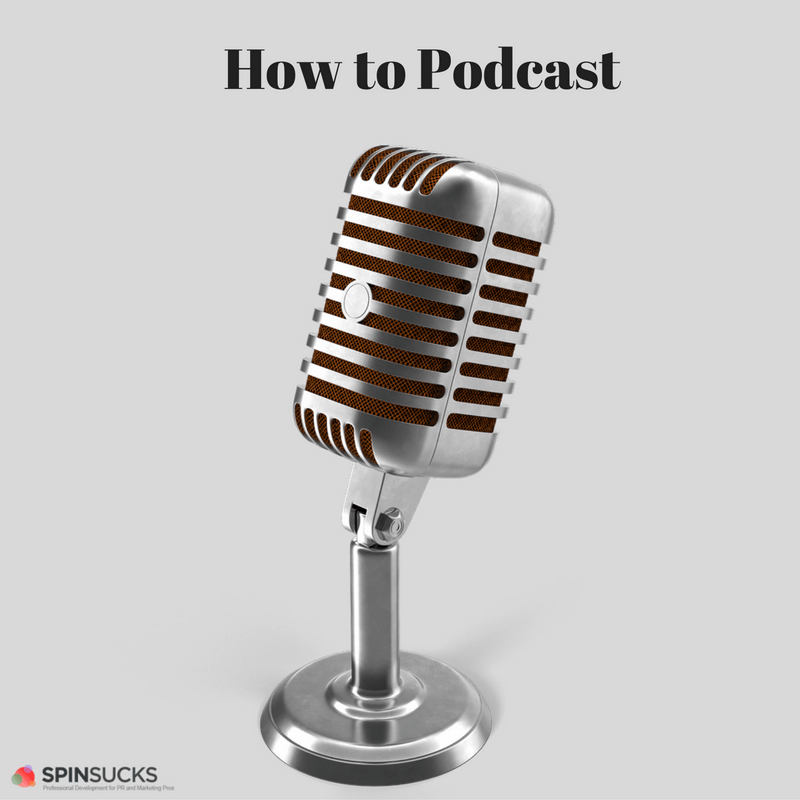 Earlier this week, Shonali Burke, Deirdre Breakenridge, and I presented “How to Podcast” at the PRSA International Conference.
Earlier this week, Shonali Burke, Deirdre Breakenridge, and I presented “How to Podcast” at the PRSA International Conference.
During our non-panel, panel discussion, we looked at everything you need to start a podcast, obtain advertisers or sponsors, who and how to book guests, and how to measure results.
Based on our presentation and the questions the audience asked, I thought you’d enjoy a two-part series on exactly that: How to podcast.
Today we’ll discuss how to get started and the tech set-up you need.
Tomorrow I’ll go through how to gain listeners, how to work with sponsors or advertisers, and how to measure your efforts.
Should I Start a Podcast?
I’d be interested to know how many of you actually listen to podcasts, either for work or for fun?
Serial certainly changed the landscape for many of us, as we all became obsessed with listening week after week.
But, as much as I hate to admit it, none of us have teams of people who can spend months researching a topic.
Nor do we have a huge platform—such as NPR—behind us.
Which begs the question, should we really consider a podcast as part of our communications plan?
The short answer is: It depends.
Just like anything else.
Let’s assume, for the sake of this article, you do your research and you discover that, yes, your target audiences would love it if you had a podcast.
How Do I Decide on My Podcast Theme?
During the research to figure out if you should do a podcast, you also should begin to uncover themes.
A podcast isn’t unlike any other content you produce.
You’ll have an editorial calendar.
Some of your content will be written, some video, and some will fall into your podcast camp.
But let’s say you’re starting from scratch and really need help with a theme.
There are four ways to do your research:
- You can, of course, send a survey to existing customers, readers, viewers, fans, and followers and ask.
- Go into your sent mail and look to see what types of questions you answer via email pretty consistently.
- Sit down and write down all of the questions you get in new business meetings or when you’re with clients or customers.
- Do extensive searches on Twitter to see what your audiences are discussing there.
This research will help you find themes, and it will give you lots of fodder for other content.
What Resources Do I Need for My Podcast?
There are lots of ways to skin this cat—some of it can be an investment and some can be fairly inexpensive.
I’ll tell you how Martin Waxman, Joe Thornley, and I do it for Inside PR.
First, buy yourself a nice microphone. Martin and I both use the Shure MV5.
We used to record over Skype, using Call Recorder.
But now that Zoom exists and it records high definition audio and video on separate tracks, we use that.
Both Skype and Zoom have free and paid versions so it’ll just depend on your needs.
I pay for Zoom because we use it for everything. It’s $14.99 a month.
That’s for recording each episode.
Then you need Audacity to produce the show (also free).
Some people use GarageBand or Camtasia, but I always fall back on Audacity because it’s easy to use.
And you need a Libsyn account, which is about $5 a month.
Libsyn is where you’ll store your podcast files.
It’s really easy to set up iTunes and Google Play and everything else through Libsyn so don’t skip that part.
What is the Total Investment for My Podcast?
After you make the initial investment for a microphone ($99+), you can do it pretty inexpensively.
You can easily use Zoom and Audacity for free and spend only $5 a month for Libsyn.
Or you can upgrade and spend $20 a month for Zoom and Libsyn.
Trust me, the out-of-pocket expense is less than you spend on coffee every month so don’t let that stop you.
The time investment you’ll make, however, is a little more significant.
We’ll talk about that tomorrow.
In the meantime, for those of you who do podcast, what else would you add here?